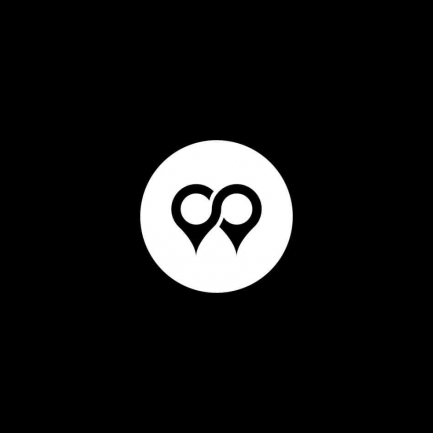Facing Google Ads against Facebook Ads for an online marketing specialist is like asking a child who he or she loves more, dad or mom.
The two giants of online advertising are positioned as competitors in the ever-growing market. If you still don't know which one might work best for your brand, we'll clarify your doubts here.
1. Main goal
| Facebook Ads | Google Ads |
Branding, give visibility, improve positioning and brand recognition. | Attract customers who are already in the process of purchase research and have a certain interest, generate leads and increase sales. |
One of the biggest differences between the two platforms is the main goal of the ads. Facebook campaigns are mainly used to give visibility to brands, improve positioning and recognition, while Google Ads' focus is to attract potential customers who have already done previous research and who are interested in making a purchase. Although both platforms offer multiple types of ads and objectives, when choosing you have to remember that each one of them has its strengths and can better adapt to your strategy. It's your turn to analyze your business.
2. Characteristics, functions and segmentation
| Facebook Ads | Google Ads |
The world's largest social network, includes ads on Facebook, Messenger and Instagram. Specific segmentation by location, demographics, language, interests, education, marital status, work, connections and interests of all kinds.
| The world's largest display network includes all the sites belonging to Google and millions of other web pages. Segmentation by keywords in search results, geographical location, demographic data and interests based on the user's search history.
|
As the world's largest social network with more than 2.3 billion active users, Facebook has a very powerful advertising platform and is the pioneer of paid social media ads. It includes ads on Facebook, Messenger and Instagram and it potentially offers access to every user of those networks. Facebook's audience segmentation is very specific, which allows you to show ads to an audience that is more in line with your brand's values. People share every detail of their lives on Facebook and consume content based on their interests. Apart from basic demographic data and geographic location, you can know their marital status, job and connections of all kinds. With this amount of information you will be able to segment your ads to the maximum optimizing the investment.
Google has the world's largest display network, made up of all its components, such as YouTube or Gmail, and more than two million other associated websites. As the world's most popular search engine, it offers access to an audience that actively searches for products or services. The foundation of Google Ads segmentation are the keywords. In order to get closer to the consumer who is closest to the purchase decision, Google matches the terms searched for by users with the keywords of a campaign and shows only those ads that match. In its Display Network, which covers most of the advertising spaces on the Internet, Google allows segmentation by geographic location, demographics and interests that are known thanks to the search history of a user.
3. Users' intentions
| Facebook Ads | Google Ads |
Users are not looking for information, they have no immediate purchase intention. They are at the beginning of their shopping journey. | Users are proactively searching for information or results. They are at an advanced stage of their shopping journey. |
The users' mentality is the reason why communication between the advertiser and the audience must be different on these two platforms. Keep this in mind when preparing ads.
Facebook users are not looking for information and have no immediate purchase in mind. They browse the app for entertainment, photos, videos, comments, and discussions with friends. When you're preparing a campaign you need to create audience groups with interests and features that match your brand's values. Your potential customers are at the beginning of their shopping journey, so your main goal is to get their attention and create awareness of a need.
One of the main benefits of investing in Google Ads is that people who are looking for a product or service on Google are already at an advanced stage of their shopping journey. They actively investigate to find an answer or solution and it is up to you to satisfy this need for information. Thus you reach directly the people who have shown their interest in your brand or industry and attract potential customers, all thanks to the keywords. The more relevant your ad, the better the customer experience. Your goal is to offer a solution to a user's problem.
4. Budget and payment models
| Facebook Ads | Google Ads |
Lower costs, PPC | Higher costs, PPC
|
Both platforms use the pay-per-click system. Cost per click (CPC) may vary depending on the industry you're in, but Google Ads tend to cost more. Be careful! Although Google Ads generally has a higher click rate than Facebook, remember that CTR doesn't always mean conversions and campaign success.
Facebook allows you to choose the price and one of the two types of bids: with CPM you will pay a price per thousand views of your ad, with CPC only for the clicks that people make in your publication.
In Google Ads you can choose how to bid on your ads depending on the aspect that is most relevant to you: CPC bidding to prioritize clicks, CPA (cost per acquisition) for conversions, CPV (cost per view) for video views or CPM for search network impressions.
5. Ad placements
| Facebook Ads | Google Ads |
Facebook: Newsfeed, instant articles, in-stream video, right column, marketplace and stories. Messenger: Inbox and stories. Instagram: Newsfeed and stories. | Search Network: In the search results and among the Shopping products. Display Network: banners on web sites that offer their advertising spaces, ads in videos and apps. |
In Facebook Ads you can manage the placements of the ads by type of device and platform. Instagram allows you to choose between the main feed and the stories. On Facebook, you can upload your campaign to the newsfeed or choose between instant articles, in-stream videos, right column, marketplace and stories, while Messenger lets you place them in the inbox and stories. If you want to know more about campaign structure and ad formats on Facebook read our Facebook Ads guide.
Google Ads placements are divided into two types: those that appear in the Search Network and those that appear in the Display Network websites. Along with the search results, text, call only and Shopping product ads are displayed, while the Display Network ad placements are used for responsive ads (which automatically adjust their size and format to fit available sites), app promotions, and image and video creativities.
6. Formats
| Facebook Ads | Google Ads |
Facebook: Advertisements with image, with video, also in vertical version for the stories. Presentation advertisements, carousels, Collections, Canvas. Instagram: Ads in stories, with photos, with videos, carousels, collections. Messenger: Ads with photos in the inbox, with photos and videos in portrait format of the stories. | Search Network: Text-only, call-only, products in Shopping and product sample ads in Shopping. Display Network: Responsive ads, image formats, app promotions. |
Facebook Ads formats are very visual and interactive, any ad must have at least one image. The most popular are the image ads accompanied by text, carousels of images and videos. In addition, Facebook allows you to create two exclusive formats for mobile phones that can increase sales and create a visually appealing micro-web experience: Canvas and Collection.
Instagram offers very similar formats: the classic photo with text, a video, a carousel of images or the Stories of photos and videos that are displayed for five seconds by default. If you have a collection on Facebook, you can also use this format in Instagram.
Messenger lets you upload ads with photos in the inbox, or the vertical format of stories. Messenger stories are the same stories that appear on Facebook and are shown to the same audience.
The formats of Google Ads differ depending on their location. The most popular one in the Search Network is the text-only ad. This form of native advertising appears with the label "Ad" or "Ads", is displayed above or below the results and consists of a title, a URL, and a 90-character description. If you have a store, you can use Shopping Ads to promote products and increase sales. This format shows users a product photo, title, price, and store name in Google Shopping search results. If you want to direct calls to your company, Google offers you a format available only for mobile phones in which the click on the ad initiates a call.
Display Network banners have more creative formats. They are automatically adjusted to fit the ad spaces available on websites associated with the Google ad network and better integrate with the content of the page on which they are displayed. Thanks to graphic content, images and videos or even interactive elements, the ad is more attractive and eye-catching. They appear on some or other websites depending on the orientation you choose: you can target your campaign by audience (i.e., show it to a specific group of users) or contextually (present ads on specific websites and choose specific topics or content contexts).
Conclusions
As you can see, both Facebook and Google are very powerful platforms and do not necessarily have to be opponents. There is no single answer which one is better, as there are multiple options and each one may work better or worse for different types of business. Now that you know the differences it's your turn to consciously evaluate your goals and your target audience. You can choose just one of these platforms or combine them in your strategy. Remember that the use of Facebook does not rule out Google and vice versa. On the contrary, a mixture of the two can open up a new world of possibilities.
Main photo: Jamie Davies




